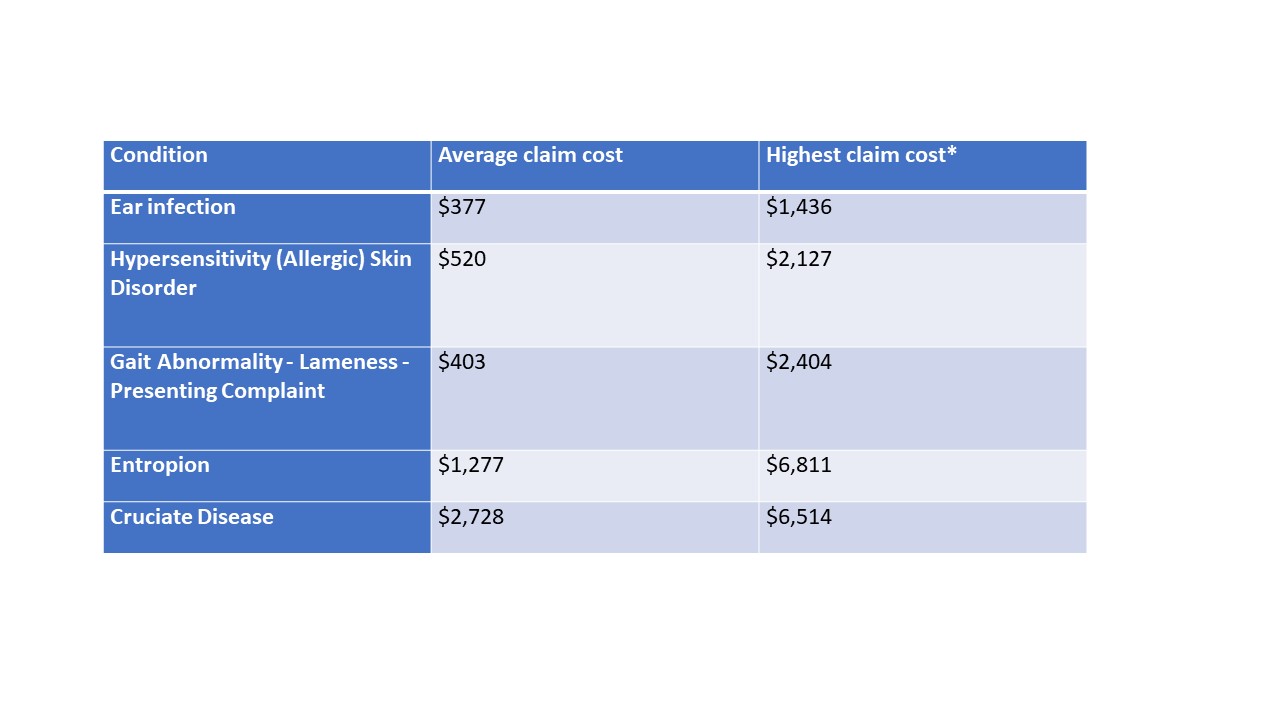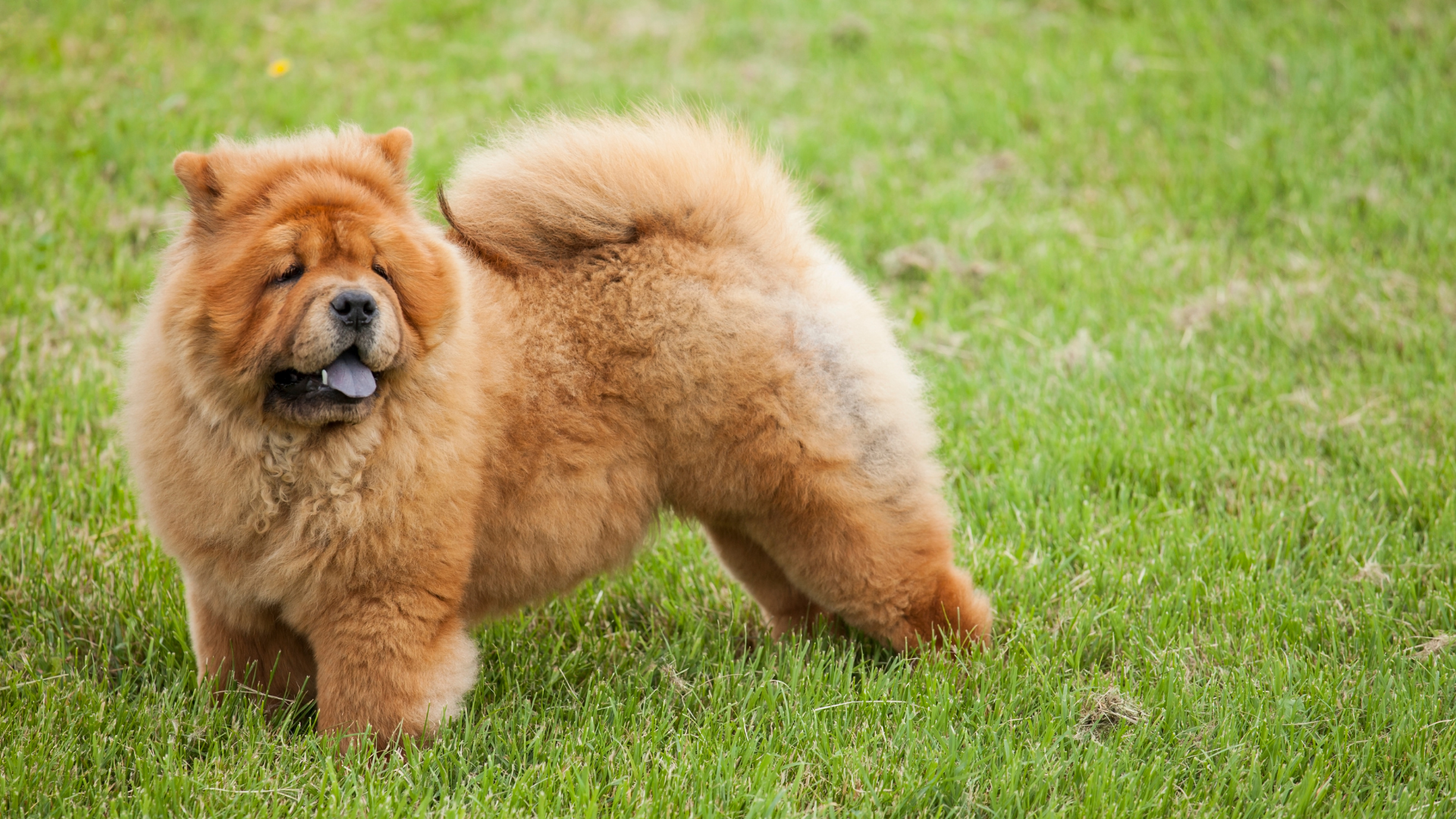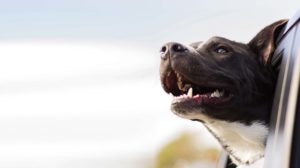Introduction
A Chinese breed, hailing from the country’s cold northern region, the Chow Chow was originally bred as a multi-purpose working dog. The Chow Chow is a devoted and protective furry family member.
An ancient breed, the Chow Chow originated in China about 2,000 years ago but might be even older.
The breed’s original use included hunting birds, guarding livestock, pulling sleds in winter, and may even have been a source of meat and fur pelts. The breed declined in numbers after the Imperial hunts ended, but a few descendants were kept in monasteries and wealthy households. Chow Chows were first brought to England in 1880 and then to America in the early 1900’s.
Appearance and Personality
The Chow Chow is a sturdy, medium-sized dog ranging in height from 43 to 51 cm and weigh between 20 to 32 kg. They are memorable for their lion-like appearance, wrinkly face, and uniquely coloured blue-black tongue. Coat colours include red, black, blue, cinnamon, and cream. The average life expectancy of a Chow Chow is 11 to 12 years.
Aloof and independent in nature, Chow Chows are usually devoted to their families, but may be wary of strangers. Early training is therefore vitally important, and they tend to be better suited to a household with experienced dog people to aid in that training. They may have aggressive tendencies towards other dogs and small animals. As with training, early socialistion to help them become used to other dogs, animals and people will help the Chow Chow to grow into a well-adjusted adult dog. The breed has moderate exercise needs, such as an early morning and evening walk. They tend not to tolerate heat and humidity well so may be better suited to cooler climates. Like many dogs, the Chow Chow will appreciate a backyard to investigate, but they may adapt to apartment life if given plenty of exercise, toys, and company.
The breed’s double coat comes in two varieties, a short smooth coat and a longer rough coat that stands out. Both coat varieties shed. They will benefit from at least weekly brushing with a slicker brush for short hair and a pin brush on longer hair. Excessively long hair around the genitals, toes and eyes may need trimming every now and again.
Common Health Concerns
The five most common reasons for a Chow Chow to visit the Vet (excluding routine care visits) according to PetSure data across the 2020 calendar year included skin problems such as allergic skin disease, arthritis, ear infections, gastrointestinal tract conditions, and cruciate disease.
The five most common reasons for Chow Chows to visit the vet (excluding routine care visits) according to PetSure data in the 2020 calendar year:
| Rank | Condition | Average cost for single treatment (average pet insurance claim amount) | Highest cost for single treatment (highest pet insurance claim seen for this condition) |
| 1 | Skin problems including allergic skin disease, pododermatitis | $221 | $1,640 |
| 2 | Arthritis | $216 | $2,852 |
| 3 | Ear infections | $177 | $964 |
| 4 | Gastrointestinal tract problems, including Canine Haemorrhagic Gastroenteritis, gastritis | $313 | $5,250 |
| 5 | Cruciate disease | $1,273 | $5,599 |
Disclaimer: Reimbursement for these claims would be subject to limits, such as annual benefit limits or sub-limits, benefit percentage, applicable waiting periods and any applicable excess. Cover is subject to the policy terms and conditions. You should consider the relevant Product Disclosure Statement or policy wording available from the relevant provider.
For the same period (2020 calendar year), the top five highest single vet treatments (or highest pet insurance claims) for Chow Chows from PetSure data were:
| Rank | Condition | Highest Cost of treatment for condition (average pet insurance claim amount) |
| 1 | Gastric dilation and volvulus | $10,961 |
| 2 | Cruciate disease | $5,599 |
| 3 | Vomiting | $5,250 |
| 4 | Hip dysplasia | $5,195 |
| 5 | Elbow dysplasia | $4,699 |
Disclaimer: Reimbursement for these claims would be subject to limits, such as annual benefit limits or sub-limits, benefit percentage, applicable waiting periods and any applicable excess. Cover is subject to the policy terms and conditions. You should consider the relevant Product Disclosure Statement or policy wording available from the relevant provider.
Most popular Chow Chow names according to PetSure 2020 data:
Most popular female names
- Luna
- Daisy
- Coco
- Bella
- Ruby
- Molly
- Lola
- Winnie
- Millie
- Willow
Most popular male names:
- Teddy
- Milo
- Charlie
- Archie
- Ollie
- Alfie
- Max
- Buddy
- Leo
- Winston
Did you know?
Sigmund Freud, an Austrian neurologist known as the founding father of psychoanalysis, had Chow Chows. One of his Chow Chows, named Jofi is said to have helped Freud analyse his patients, by being able to tell if a patient was calm, anxious, or depressed. Jofi kept her distance from anxious patients, but offered comfort to those who were depressed by staying close for pats.
Frequently Asked Questions
The Chow Chow is believed to have originated in China several thousand years ago. It is one of the oldest known dog breeds.
Chow Chows are a medium-to-large-sized breed. On average, males typically stand around 48 to 56 centimetres tall at the shoulder, and females are usually slightly smaller, measuring 46 to 51 centimetres in height. They generally weigh between 25 to 32 kilograms.
Chow Chows are known for their independent and aloof nature. They are typically loyal and protective of their families. They can be reserved and wary of strangers, requiring early socialisation and consistent training for proper behaviour.
Chow Chows can be good with children if they are properly socialised and raised with them. However, due to their independent nature, they may not have the same playful and tolerant temperament as some other breeds. Supervision and teaching children to interact with dogs respectfully are important.
Chow Chows are not overly active dogs and have moderate exercise needs. They enjoy daily walks and some playtime, but they are not as high-energy as some other breeds. Mental stimulation and training activities can also help keep them engaged.
Chow Chows can be independent and stubborn, which can make training a challenge. They are intelligent but tend to have a more aloof and strong-willed personality. Consistency, positive reinforcement and early socialisation are crucial for successful training.
Chow Chows can be territorial and reserved with other pets, particularly dogs of the same sex. Early socialisation and proper introductions are important to help them get along with other animals. They may be better suited to being the only pet in the household.
The average lifespan of a Chow Chow is typically around 9 to 15 years, with proper care, nutrition and regular veterinary check-ups playing a role in their longevity
Yes, Chow Chows have a dense double coat that requires regular grooming to keep it in good condition. They have a thick undercoat and a harsh outer coat. Regular brushing is needed to prevent matting and to maintain their coat’s health and appearance.
The most common conditions in 2022 are listed in the table below:
Disclaimer: Reimbursement for these claims would be subject to limits, such as annual benefit limits or sub-limits, benefit percentage, applicable waiting periods and any applicable excess. Cover is subject to the policy terms and conditions. You should consider the relevant Product Disclosure Statement or policy wording available from the relevant provider.
* Please note that the values calculated are based on all claims for that condition and medically related conditions in each calendar year.
References
- Australian National Kennel Council 2021, Breed Standard of the Chow Chow, accessed on 04/05/2021
- Freud Museum London 2018, Freud at Home with his Dogs, accessed on 04/05/2021
- American Kennel Club, Chow Chowv, accessed on 26/05/2021
Pet insurance can help by covering a portion of the eligible vet bill if the unexpected happens. Because it is difficult to predict the costs of veterinary care, it can help to have measures in place to help prepare for the unexpected. Check out our partner network and explore our policy tools to find a pet insurance policy.
Not all conditions or items are covered by Pet Insurance. Refer to the applicable Product Disclosure Statement for information about coverage and exclusions.








